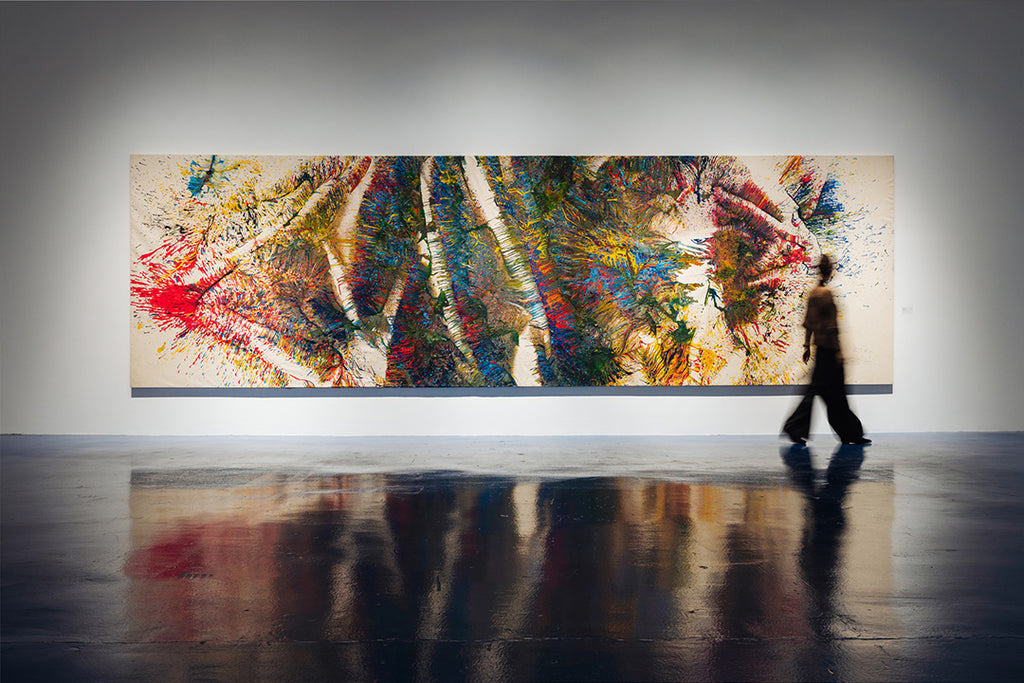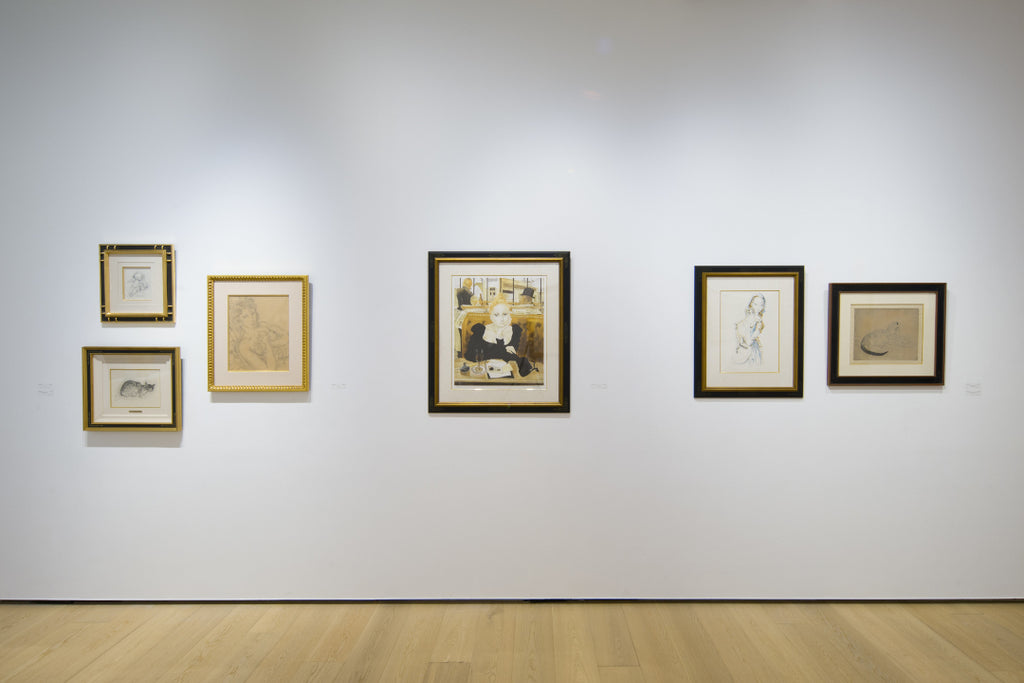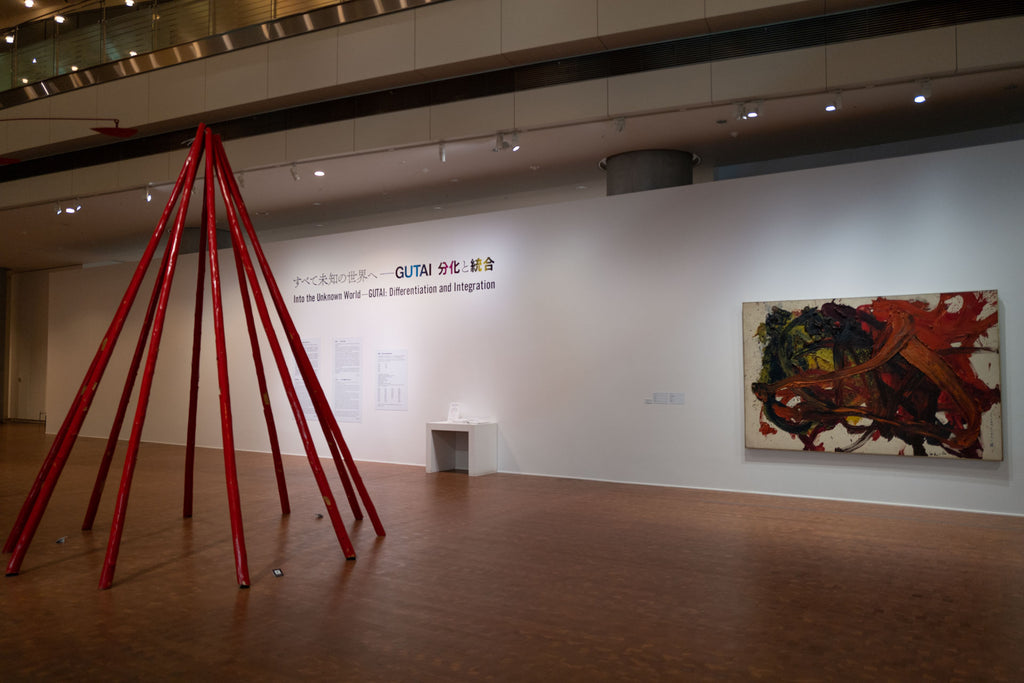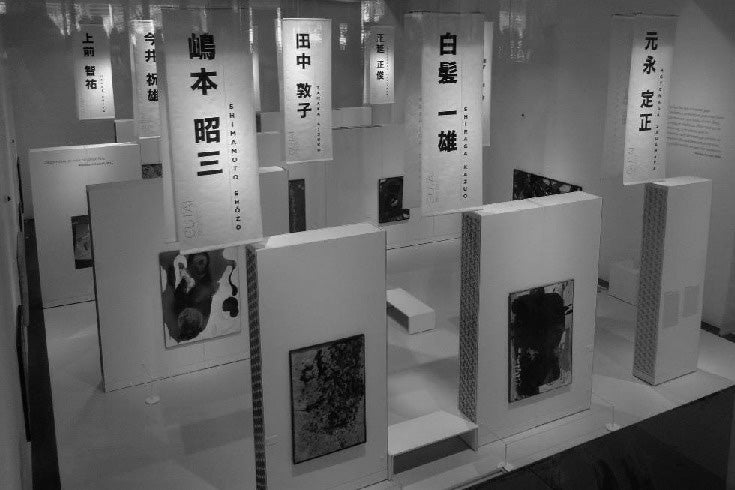ARTICLES
The Origin and Revival of Saburo Murakami's Paper-Breaking Art
GUTAI STILL ALIVE 2015 vol.1
24/35
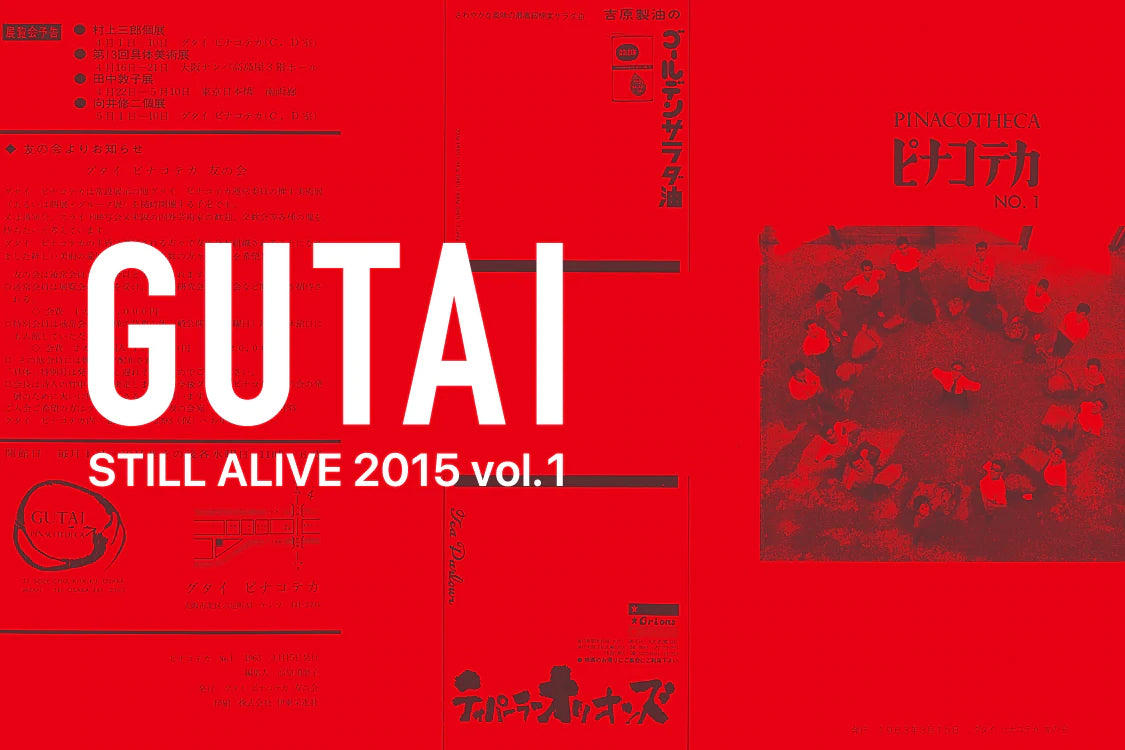
A project evolving the digitized archive of the book, “GUTAI STILL ALIVE 2015 vol.1”. The 24th edition features Saburo Murakami, a core member of Gutai who was famous for his paper tearing performances where he burst through paper stretched on wooden frames. This paper-tearing art was initially inspired by his son Tomohiko, who was a toddler at the time. In this interview, we talked to Tomohiko, who has continued this form of art performances after his father's death, and has kept detailed records about his father's life and artworks.
Visit and Interview with Mr. Tomohiko Murakami, Saburo Murakami’s Eldest Son
The beginnings of “Kami Yaburi” by Tomohiko Murakami
Saburo Murakami works “Kami Yaburi”continue to live on after his death in exhibitions worldwide. We cannot discuss his performances without mentioning his eldest son, whom I visited for this interview. Saburo got the idea of “Kami Yaburi” from his son, Tomohiko Murakami, when he accidently tore through a “fusuma” (paper screen door) when he was three years of age. We can begin to imagine the “Kami Yaburi” from their family life in Japan when they started living in the tiny cramped apartments erected after the war. Saburo used the paper tearing experience from his own life and reality to give birth to a leading avantgarde performance.
This interview was conducted in Nishinomiya City, Hyogo Prefecture, in Tomohiko’s office space. Tomohiko Murakami, formerly a selection committee member to the Tezuka Osamu Prize, and presently a Manga critic, editor and Professor of Literature at Kobe Shoien Women’s University. Inside his office, many books were piled-up and it reminded me of a place where the print world had settled. At first glance, Tomohiko’s glasses gave me the impression I was looking at his father himself.
Tomohiko (TM): When I was three, misbehaving as a part of play, such as tearing paper doors, may have been the beginnings of “Kami Yaburi”. We were living in a two-bedroom apartment. One of the rooms was used as a bedroom as well as a living space while the other room was for my father’s atelier. He always locked the door when he began to draw in his room. Since I was small, I had no idea what he was doing inside and I often knocked on the fusuma asking him to play. One day, I knocked too hard and tore right through the paper screen door. He saw this and was very much impressed. I got the feeling that he may have wanted to do this himself.
Tomohiko was born in 1951. The next year Saburo participated in Zero, a radical group belonging to Shinseisaku Kyokai with artists Kazuo Shiraga, Akira Kaneyama, and Atsuko Tanaka. Shozo Shimamoto approached and invited members of this group to participate in the Gutai Bijitsu Kyokai. This story is well known before the start of the Gutai group. Shimamoto’s invitation led Zero” to become members of Gutai group.
Saburo’s joined the Gutai when Tomohiko was three years of age. In 1955, the first Gutai exhibition was held in Kohara Kaikan in Tokyo where “Kami Yaburi Sakuhein” (“Entrance”) was performed. The paper tear accident by Tomohiko must have happened before this exhibition. The “Kami Yaburi” performance was prominently featured in the first opening. Jiro Toshihara, the leader of Gutai group, performed “Kami Yaburi” to start the exhibition.
TM: There are many variations to “Kami Yaburi”. At the first Gutai Exhibition, Saburo exhibited (“Entrance”). To start the exhibition, the entrance was closed off with paper and then torn open like a traditional Japanese Ribbon cutting ceremony. When the exhibition was held abroad, in some cases, the director would request “Kami Yaburi” to open the exhibition. The performance “Entrance” could have been performed by anyone. So, when it was exhibited for the first time, it seemed natural that the leader of the Gutai group, Mr. Yoshihara would perform.
The connection between “Kami Yaburi” and Tomohiko, from the start of the first memorable exhibition did not end there. After Saburo’s death, Kamiyaburi was performed a number of times in Japan and abroad by Tomohiko. So to speak, the original performer of the “tearing paper door” re-enacted the performance.
TM: When my father performed abroad, my mother went with him. She knew how to do the performances and she also taught me how to do them. My mother thought it was important for me to learn “Kami Yaburi”, so she took to me to various exhibitions in Japan. The only time I saw my father perform was at The Hyōgo Prefectural Modern Art Museum (presently known as Hyōgo Prefectural Museum of Art).
When my father passed away, my mother was invited to exhibitions from foreign countries and I was asked to perform “Kami Yaburi”. The first time was in Rome. Since I was given the chance, I agreed to the request but I did not want to have high expectations placed upon me. After that, I performed at a number of venues including the 50th Anniversary of The Hyōgo Prefectural Museum of Art and The National Art Center in Tokyo. When I started performing “Kami Yaburi”, I thought I would have a moment to understand my father but it was not as expected. It was inspiring to be in the performance and to remember my father in this way but I didn’t get any new discoveries from these experiences. Even today, I am requested to perform “Kami Yaburi”, when there is an exhibition abroad in relation to Gutai group, but I cannot perform so readily. I will only perform in appropriate venues. My father used to say when he performed in front of Mr. Yoshihara, he was praised very well, however, Mr. Yoshihara commented how the last move in his performance was “all too read”.
Before I perform, I try not to think and erase any negative thoughts I may have. Even if I plan to do something intentional during the performance, there is no way I would be able to carry it out. Once I start the performance, I am not aware what is happening. If I start without thinking, I know that it will end. It will never work if I want to finish the performance in a cool manner. (laughter)
It is fascinating to hear about the history and re-enactment of “Kami Yaburi” but Tomohiko’s involvement continues. Tomohiko is presently in the process of documenting his father’s work. Since childhood, Tomohiko was always playing at the Gutai exhibitions, as a result, he is one of the people who has followed this group deeply and closely. As a student, he assisted with the planning and making of the Gutai exhibition at Expo, in this way, Tomohiko naturally interacted with artists.
Beyond Gutai activities, he has also been documenting his father’s solo activities. In 2013, Tomohiko edited “Murakami Saburo, Through the ’70s”, a record of exhibitions held after Gutai group ended in the ’70s.
TM: When looking at the notes of my father’s exhibitions, he expressed his performances deeply with words. His works were always expressed abstractly without the use of words and I feel there was logic behind it. Contrary to argumentative, his work made one think in a philosophical manner. So, when he began to draw, he would spend more time thinking. Once he started his work, all I heard were murmurs. I remember he would spend the whole night thinking and nothing changed in his work the next morning.
In the 70’s, as a university student, I was involved in his solo exhibitions. He exhibited for the first time, without the Gutai group, at Morris Form Gallery in 1971.
He exhibited “Hako”. He created 21 wooden boxes and placed them throughout Osaka city, collected them, piled them in the gallery, and slowly dismantled them during the show. Morris Form Gallery was originally intended to be a rock café but was used as a gallery instead. This was a hang out spot for many of Osaka’s interesting people such as Kazuo Izutsu (later becomes Movie Director), Junichi Kusaka (Designer), and Eijiro Mori (Illustrator). My father interacted with many people in different genres outside the art world. In this process, the interactions he had with people became the exhibition itself. During the 70’s, he made work which was not meant to last. Rather than not creating anything, I think he was trying to accomplish something different.
Saburo Murakami was a prominent member of the Gutai group but after they disbanded, his work went beyond the existence of art production. In the 80’s, he only exhibited in Ashiya city in Hyogo prefecture, and he never exhibited anything that would remain. He valued the world of philosophy, and left us a variety of questions.
Currently, Tomohiko Murakami documents the work of his father in the expressive manner of a comic critic. Saburo Murakami’s work should be examined more thoroughly, from the time he was in the Gutai group to his independent works. In order to do this, Tomohiko who had always supported him at his side, will continue to organize his treasured documents.
(Mothly Gallery, July 2014)
Read more about the “Gutai Art Association »
*Information in this article is at the time of publication.
